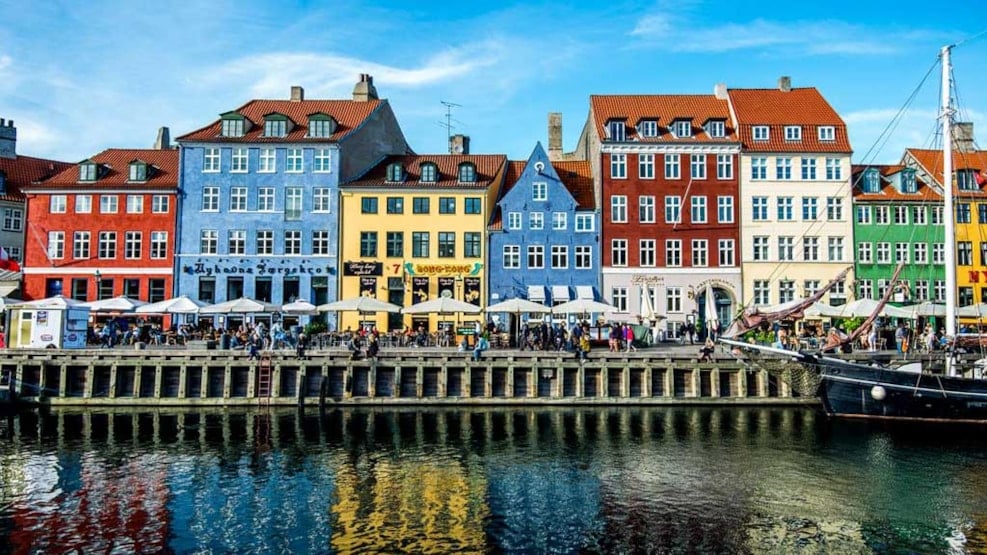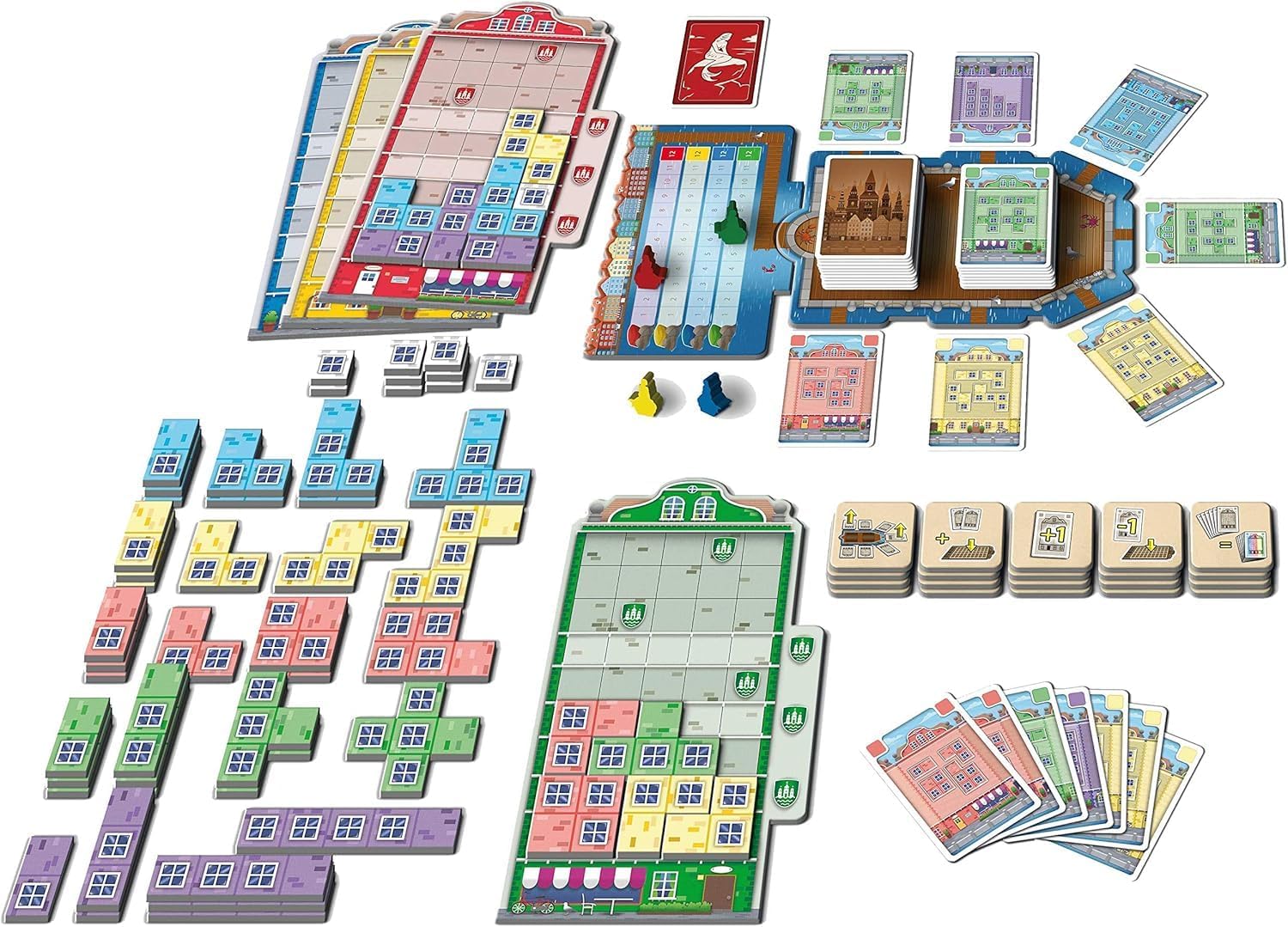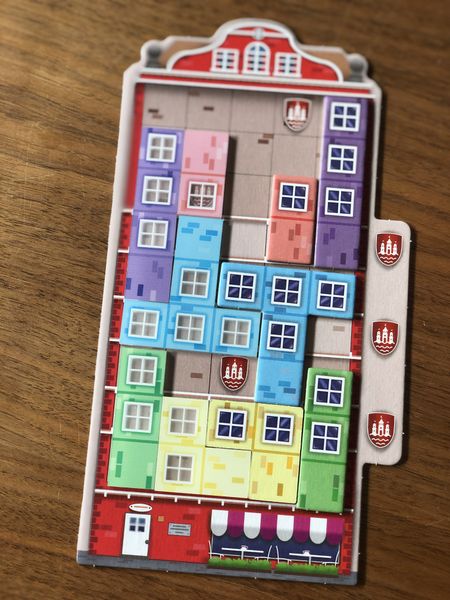Copenhagen is a game that makes city planning a competition that’s a little bit beauty contest and a little bit Tetris.
Copenhagen is the capital of Denmark, home of the famous Little Mermaid statue, and one of the most beautiful cities in the world. Nyhavn harbor is one of the city’s most well known locations, recognizable for its colorful and picturesque buildings. And Queen Games’ Copenhagen wants you to build help build a beautiful little harbor district of your own.
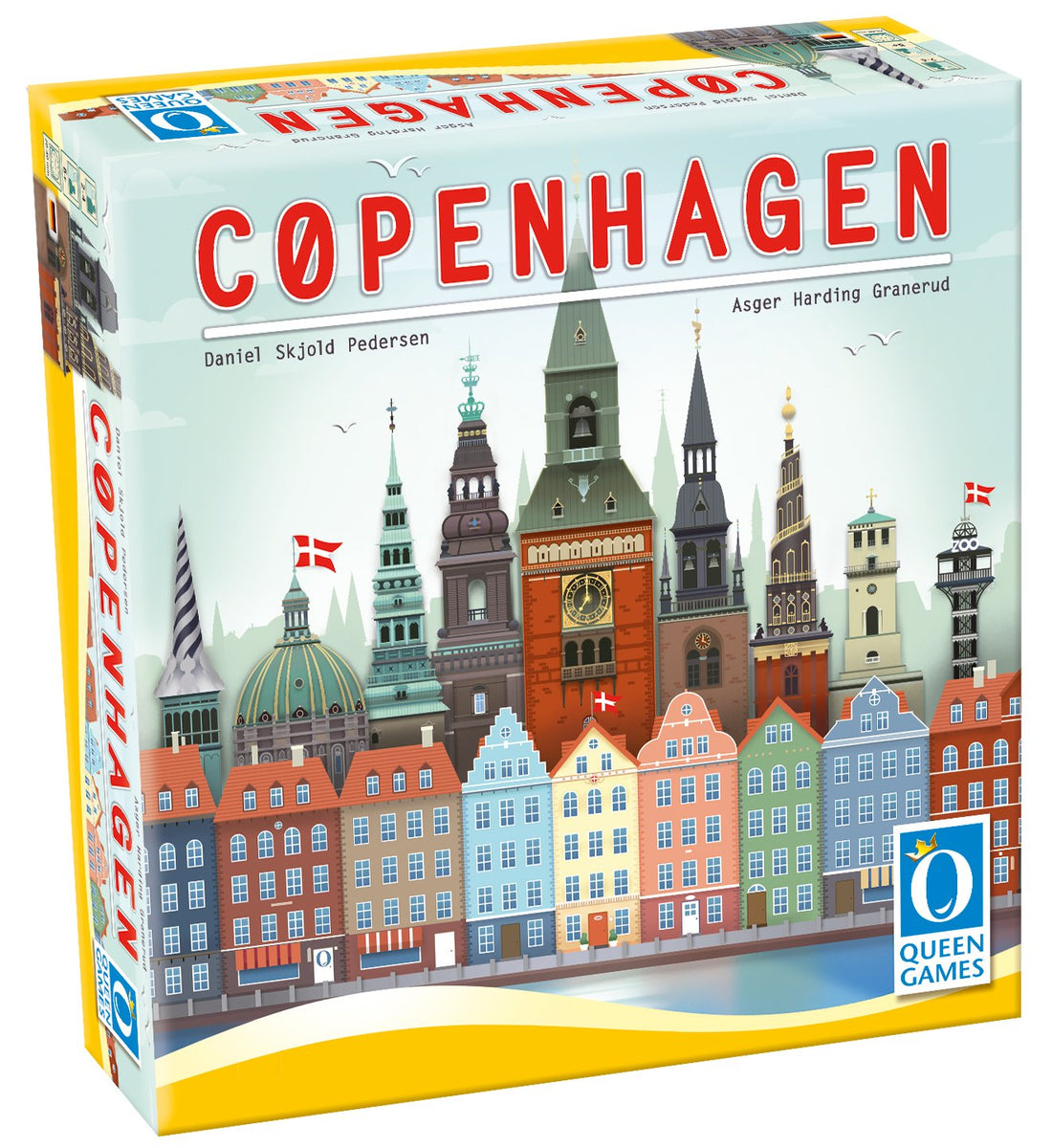
Copenhagen
Copenhagen launched as a Kickstarter campaign on March 8th 2019. The game had a goal of $20,000, but by the campaign’s conclusion, 1,542 unique backers had pledged $133,176 to bring the pretty city building board game to life.
The basic concept of Copenhagen is simple enough. Players are architects, striving t o build the most beautiful and impressive new facades for the famous, colorful houses on the waterfront. Players build this waterfront with tiles, strategically placing them into rows and columns. The game is described as a mixture of rummy and Tetris.
Since its initial release, Copenhagen has been expanded and spun-off multiple times, including a few editions that are no longer available to purchase. And the game has been nominated for and awarded muliple awards including 2019’s Guldbrikken Best Family Game (Winner), 2019’s, 2019’s Årets Spil Best Adult Game (Nominee), 2019’s Årets Spel Best Family Game (Nominee), and 2019’s 5 Seasons Best International Family Game (Nominee).
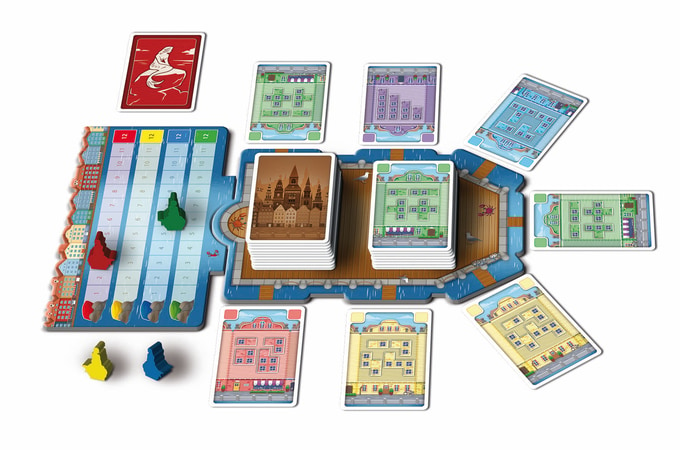
READ MORE: ‘Blossoms’ Card Game makes Tending Flowers A Contest
Game Object and Set Up
The goal Copenhagen is to be the first player to score twelve points, or the player with the most points when the ‘End of Game’ card is revealed. Players will score points by collecting building cards from the display. Each card represents a building that needs facade tiles of the same color to cover it; these tiles can be purchased in various shapes and sizes. Players points are awarded for covering entire columns or rows, but special skills and abilities may be revealed throughout gameplay to makes things more interesting.
To set up, players place the harbor and the scoring track in the center of the playing area, stack the facade tiles by color and shape in an area within reach of all of the players, and stack one ability tile per player next to the scoring track. Then facade cards are shuffled and stacked face-down on the harbor. The first seven cards are flipped over to reveal the card display and place the End of Game card next to the scoring track. Finally, each player choses a color and takes a building and scoring marker of that color; the building is placed in front of them with the scoring marker on the starting space.
How to Play
To play, players can either take cards or construct facades. Two cards must be drawn for a maximum hand size of seven cards and players can discard down to seven if they have too many.
To build a facade, players will pick a facade tile and discard a number of cards equal to the size facade piece they are playing. But these cards must also all show facade tiles that match the ones being played. For example, if a piece with one brickwork piece and two windows is being played, the player must discard three total cards and each card should show facades with one brickwork and two windows.
Once chosen and paid for, the facade tiles must be placed on the player’s building. New pieces must be played on the bottom row or on top of another already established row- you can’t build wall on top of air.
For every floor or row that a player completes, they are awarded one point. For every section or column, they get two. If an entire row or column has windows, their points are doubled- so two instead of one and four instead of two. If the player covers a coat of arms spot they get special tiles or the opportunity to use special abilities.
The game ends when a player reaches twelve points or when the End of Game card is revealed.
Expansions and Spinoffs
On the Queen Games website now there is original Copenhagen as well as Copenhagen Deluxe, Copenhagen Queenie Box, Helsinki, Helsinki Deluxe, and Helsinki Expansion 1.
There was also a Kickstarter Deluxe Edition and a Collectors Edition. Both are no longer available, but these are very similar to the Deluxe and Queenie editions.
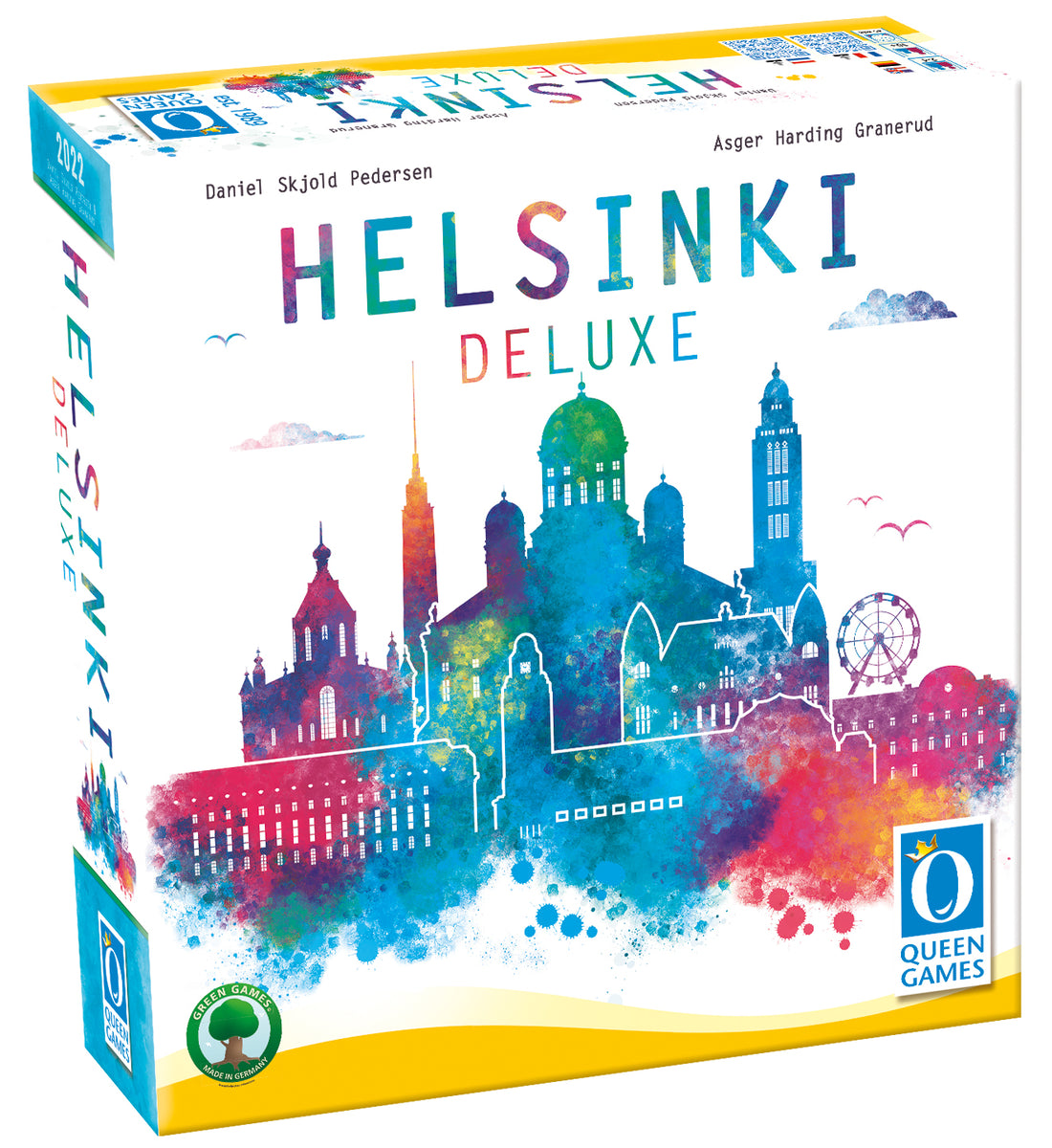
Is Copenhagen Hard To Play?
Not really. It’s easy to learn and play, but can be a little difficult to master. There’s a fair amount of strategy to the game. But if you’re a visual person with a knack for making things fit together and an uncanny ability for Tetris, you’d probably get very good at Copenhagen very quickly.
How Long Does Copenhagen Take To Play?
This is a game for two to four players and games typically last between twenty and forty minutes. Length of your specific game will vary greatly depending on how many people you’re playing with and how new they are to the game… Or if those players are they type to agonize over their moves and facade tile placement.
Copenhagen is also a game with a 8+ age recommendation. There’s nothing inappropriate or nature about this game, but the strategy may be a bit complex for children much younger than eight.
Happy Adventuring!
Subscribe to our newsletter!
Get Tabletop, RPG & Pop Culture news delivered directly to your inbox.
Don’t Miss:
Read more at this site

